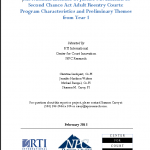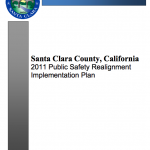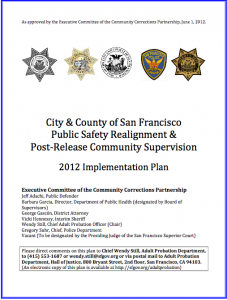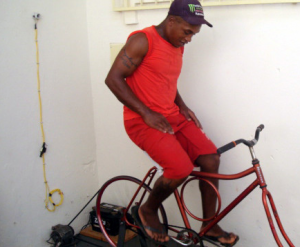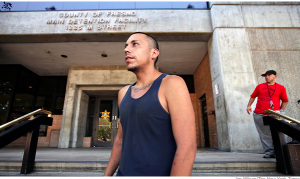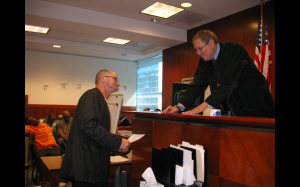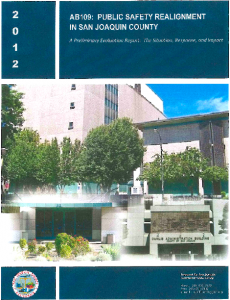
The San Joaqun Realignment Model: The Probation Department takes the lead in assessing, reporting, monitoring, supervising, and rehabilitating offenders. A probation based system where the court plays a key supporting role. The court reduces its footprint, by dealing mostly with those cases and individuals where it will have the most impact, only directly involved when the offender has committed a substantial supervision violation [click on image on left for 2012 Report]
California’s Realignment Mandate (under AB109) is to move prisoners and prison offenses from state institiutions to county supervision. The Head Probation Officeer of the County, is by statute, Chair of the Communtiy Corrections Partnership, responsible for setting up a countywide AB109 sentencing system.
The courts are free to follow their traditional role of sentencing offenders to prison (even though most will serve their terms in county facilities) and dealing with revocations when they arise. By my reckoning the majoirty of counties are following that conventional approach (resulting in widespread expansion of jail facilities across the state). At the other end of the spectrum are counties who are creating comprehensive court-based sentencing systems, that to the extent possible, are involved with the offender from the time of plea through sentencing and community supervision ( Santa Clara County, works with over 2,000 participate in its Comprehensive Collaborative Court System).
Somewhere in the middle of that spectrum, between the conventional hands off approach and the comprehensive court-involved system, is San Joaquin County. San Joaquin County is in dire financial circumstances, with a population of approx.700,000 (400,000 in the city of Stockton alone) with a serious drug and gang problem. It doesn’t have the financial resources that would allow it to develop a more Comprehensive Court Sentencing System.
Instead San Joaquin county is creating a hybrid sentencing system, that combines the more traditional sentencing/probation model,with intensive court-based interventions when its community corrections system requires it. The conceptual heart of the San Joaquin model is that the court is there to assist, motivate, and serve the community-wide reentry process, not to drive the process.
Under the leadership of newly appointed Probation Chief Stephanie James, the Communtiy Corrections Partnership has taken the lead in creating a framework for the sentencing system. A county- wide probation-based plan was approved by the County Board of supervisors on Sept.25, 2012. [click here: San Joaquin County Public Safety Realignment Plan]
The Court already has a substantial and successful collaborative court presence, with at least five existing collaborative courts (Parole Reentry Court, Drug Court II/Proposition 36, DUI Drug Court, Dependency Drug Court, among others). While the court could be involved earlier and more intensively (as with its drug courts), it instead limits its reentry interventions to those cases and individuals where it will have the most impact.
The court receives pre-plea assesssments and sentencing reports from Probation, but in most cases does not become directly involved in the offender’s supervision, until their is a substantial violation. Along with an existing Parole Reentry Court (for parolees with parole violations), a Post-Release Supervision Court (Compliance Court) is planned for those felons who have serious drug problems that result in supervision violations, as well as, a Violent Offender Reentry Court for those high-risk violent offenders who have violated their Supervision. This Hybrid Realignment Model is an alternative to a comprehensive Court-Based Sentencing System [see: “A Model Court-Based Sentencing System”].
[published; October, 2012]
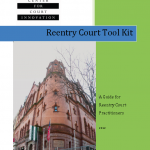 “The Harlem Reentry Court Toolkit” is an excellent document, describing in detail the structure, principles, and procedures of the Harlem Parole Reentry Court. It also provides excellent appendices, including program templates, check lists, participant questionaires and other documents that will be helpful to those starting a reentry court or simply interested in understanding how the Harlem program works.
“The Harlem Reentry Court Toolkit” is an excellent document, describing in detail the structure, principles, and procedures of the Harlem Parole Reentry Court. It also provides excellent appendices, including program templates, check lists, participant questionaires and other documents that will be helpful to those starting a reentry court or simply interested in understanding how the Harlem program works.
